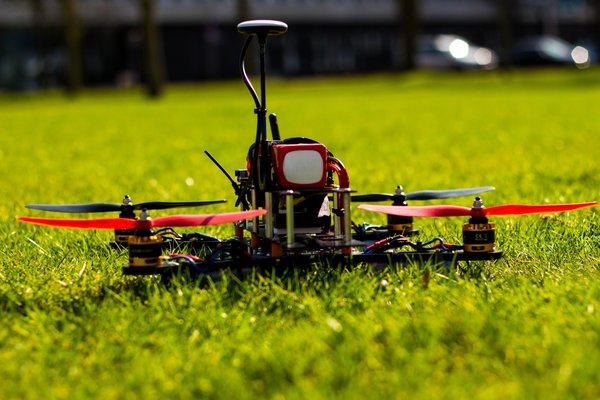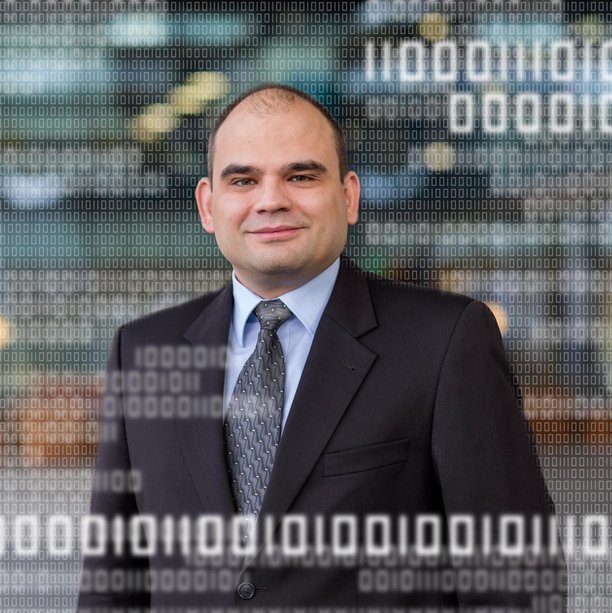Making machines understand themselves
Roland Tóth is associate professor at the department of Electrical Engineering, where he is part of the Control Systems group. He is also involved in the work of EAISI , the new institute of TU/e in the field of artificial intelligence. AI plays an important role in his research. A short introduction in five questions and answers.
What is your key research question?
My team and I focus on automatizing modelling and control design for a wide range of engineering applications, from high-precision motion systems like wafer-scanners and wire bonders, chemical processing like distillation columns and reactors, to autonomous robotic applications. These systems operate on precision scales ranging from one nanometer to a meter, and with response times ranging from one microsecond to several hours.
A general trend for these machines is that they are becoming increasingly more complex and cyber-physical in nature, in order to meet the ever-growing performance requirements, energy efficiency constraints and general need for autonomous operation. The traditional control engineering solutions are incapable to cope with this surge of complexity and performance demands. We are therefore working on the next generation of control engineering solutions, using artificial intelligence, that can meet these challenges. These new methods can automatically learn dynamical models, using both user-specified input, measured information, and existing engineering knowledge. They are even able to directly interact with the machine in an unsupervised sense.
In terms of control, we are developing algorithms that automatically learn to realize the desired behaviour of an engineering system, and during operation tune themselves to refine the overall performance and adapt to changes, without endangering safety. Think about drones that can continuously refine their motion behaviour, quickly adapt to changing wind conditions and even explore maneuvers that we have never thought of to fly between obstacles.
While in the past such methods were the hallmarks of sci-fi movies, today they are becoming reality thanks to a new dawn of machine learning methods like deep neural networks, Gaussian processes and reinforcement learning methods, assisted by a hardware revolution in computational power. It is our dream to make this dawn the foundation on which we build the future of engineering.

What is the key challenge in your work?
We have all witnessed what the raw power of AI approaches can deliver in terms of beating the best human players in computer games like StarCraft II or finding and classifying multiple objects in pictures, learning all these capabilities from scratch and from a multitude of failed attempts. However, when we are talking about wafer scanners, drones or chemical reactors, we simply cannot endanger safety for reckless exploration of the system, neither it is smart to learn Newton’s laws of motion from data that we have known for centuries.
Hence the biggest challenge we are dealing with is how to give stability and performance guarantees during learning with AI methods. We also want to achieve an efficient fusion of prior engineering knowledge and data-driven exploration of the system dynamics. Lastly, we want to accelerate learning to achieve rapid adaptation.
AI methods have already proven that they can deal with the surge of complexity in the next generation of engineering systems. Now it is on us to ensure that they can also be reliable and efficient, so that they can become a core part of these applications.
Fortunately, our recent results have already shown promising steps towards meeting the above challenges. Currently we are working together with industrial partners on deploying them in their prototypes.
What are the practical applications of your research? How does it benefit society?
As I said, my main expertise lies in establishing automated modelling tools and advanced control solutions for a wide range of applications. These methods enable quadcopters to adapt quickly when flying through a chimney, wafer scanners to move with high accelerations and more accurately than the wavelength of ultraviolet light - enabling faster production of microprocessors and also their further miniaturization -, and even use self-learning algorithms, i.e., cheap software solutions, instead of costly sensors and actuators to decrease overall product costs. Since modelling and control is a crucial ingredient everywhere, our results have many benefits for a wide range of engineering fields.
How do you see the development of AI in the future?
The core results of AI methods we are dealing with today have been around for decades and have developed with our increasing biological understanding of how our brain works. The growth of computational power enabled these approaches to finally come to light and achieve wonderous results by using very simple neural models and results from statistical inference.
However, we are only just beginning to understand the key reasons how these methods work and how can we systematically apply them. Unfortunately, it has been too easy to get to reasonable results, like in autonomous driving, without really knowing how they will react to unexpected scenarios and what specific parts of the resulting AI network are really doing. We have all seen how the hype and the lack of detailed understanding of these AI methods have led to fatal failures with autonomous cars.
Hence, we need to harness the raw power that these methods represent and develop a systematic framework for AI engineering, ensuring safety and performance guarantees, transparency and interpretability. If we achieve this, then I believe these methods will bring performance of our machines and our society to an entirely different level, which will be comparable to the industrial revolution of the 18th century.
Why should any AI researcher want to work at the TU/e?
For me, the most important reason to work at the Eindhoven University of Technology is that it has a unique position. Here, state-of-the-art fundamental research and hard-core technological developments live under the same roof, thanks to the multitude of internationally leading high-tech companies and hot-shot startups that are just next-door to the university campus. I highly enjoy this open and dynamic atmosphere. By collaborating with both large industrial partners like ASML, Philips, ASM-PT, Prodrive, Mathworks and TNO and also smaller companies, I often encountered technological challenges that greatly inspired the next fundamental steps of my own research. The gravitational pull of the region is such that we had enjoyed collaboration with even companies more distant to the region like Damen Shipyards and Flanders Make. I believe that the new EAISI institute will act as an accelerator to bring together a critical mass of researchers working on AI and companies to develop ground-breaking technologies for the future.
Help us make machines control themselves
Are you interested in the work of EAISI? Want to join Roland in his work on making machines intelligent? Either as a student or an academic? Check out what TU Eindhoven has to offer.
